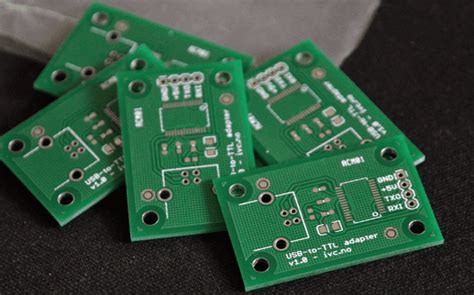How to fix flex pcb
Exploring The Themes Of The Last Of Us Part II
“The Last of Us Part II,” a sequel to the critically acclaimed video game “The Last of Us,” delves deeply into complex themes that challenge players to reflect on the nature of humanity, morality, and the consequences of vengeance. As the narrative unfolds, it becomes evident that the game is not merely a continuation of its predecessor’s story but an exploration of the darker aspects of human emotion and the intricate web of relationships that define our existence.
One of the most prominent themes in “The Last of Us Part II” is the cycle of violence and revenge.
The game meticulously portrays how acts of vengeance can perpetuate a never-ending loop of brutality, affecting not only those directly involved but also the innocent bystanders caught in its wake.
Through the character of Ellie, players witness the consuming nature of revenge, as her quest for retribution against Abby, the woman who killed her father figure Joel, becomes an all-consuming obsession. This relentless pursuit raises questions about the cost of revenge and whether it truly brings closure or merely perpetuates further suffering.
In addition to exploring revenge, the game delves into the theme of empathy and understanding.
As players navigate through the story, they are encouraged to see the world from multiple perspectives, particularly through the dual narratives of Ellie and Abby. This narrative structure challenges players to confront their preconceived notions about right and wrong, as they are forced to empathize with characters they initially perceive as antagonists. By presenting both sides of the story, the game underscores the idea that every individual has their own motivations and struggles, which may not be immediately apparent.
Furthermore, “The Last of Us Part II” examines the concept of forgiveness and redemption.
Throughout the game, characters grapple with their past actions and the possibility of atonement. The narrative suggests that forgiveness is not a simple or straightforward process but rather a complex journey that requires introspection and a willingness to let go of anger and resentment.
This theme is poignantly illustrated in the game’s climax, where Ellie is faced with a choice that ultimately defines her character’s arc. Her decision to spare Abby, despite the pain she has caused, signifies a moment of personal growth and the potential for healing.
The theme of loss is also intricately woven into the fabric of the game’s narrative.
Set in a post-apocalyptic world ravaged by a fungal infection, the game portrays a society where loss is a constant companion. Characters are continually confronted with the harsh realities of their environment, where survival often comes at the expense of personal connections. This pervasive sense of loss serves as a backdrop for the characters’ emotional journeys, highlighting the resilience of the human spirit in the face of adversity.
In conclusion, “The Last of Us Part II” is a profound exploration of themes that resonate deeply with players, prompting them to reflect on the complexities of human nature. Through its intricate storytelling and character development, the game challenges players to consider the consequences of their actions and the possibility of finding hope and redemption in a world fraught with darkness. As such, it stands as a testament to the power of video games as a medium for storytelling and emotional engagement.

Character Development In The Last Of Us Part II
In the realm of video game storytelling, “The Last of Us Part II” stands as a monumental achievement, particularly in its nuanced approach to character development. This sequel to the critically acclaimed “The Last of Us” delves deeper into the complexities of its characters, offering players a profound exploration of human emotions and moral ambiguity. The narrative intricately weaves together the lives of its protagonists, Ellie and Abby, presenting a multifaceted portrayal of revenge, forgiveness, and the enduring impact of trauma.
Ellie, who was introduced as a young girl in the first installment, emerges as a more mature and conflicted character in the sequel.
Her journey is marked by a relentless pursuit of vengeance following a devastating personal loss. This transformation is not merely a plot device but a carefully crafted exploration of how grief and anger can consume an individual. The game developers meticulously depict Ellie’s internal struggle, allowing players to witness her gradual descent into a cycle of violence. Through flashbacks and interactions with other characters, players gain insight into Ellie’s motivations, fears, and vulnerabilities, making her a deeply relatable and empathetic figure.
Conversely, Abby is introduced as a new protagonist, initially perceived as an antagonist due to her actions against Ellie.
However, as the narrative unfolds, players are given the opportunity to experience Abby’s perspective, revealing her own motivations and the personal tragedies that drive her. This dual narrative structure challenges players to reconsider their initial judgments and fosters a deeper understanding of the characters’ complexities.
Abby’s character development is a testament to the game’s commitment to portraying the multifaceted nature of human emotions, as players witness her struggle with guilt, redemption, and the search for meaning in a world ravaged by chaos.
The interplay between Ellie and Abby’s stories is further enriched by the supporting characters, each of whom contributes to the protagonists’ development. Characters such as Dina, Jesse, and Lev serve as catalysts for change, influencing Ellie and Abby’s decisions and highlighting the importance of human connection in the face of adversity. These relationships are portrayed with remarkable depth, showcasing the intricate web of emotions that bind individuals together, even in the most dire circumstances.
Moreover, the game’s setting plays a crucial role in shaping the characters’ development. The post-apocalyptic world of “The Last of Us Part II” is not merely a backdrop but an active participant in the narrative. The harsh realities of survival in this world force characters to confront their own moral boundaries and question the cost of their actions. This environment amplifies the emotional stakes, compelling players to engage with the characters on a profound level.
In conclusion, “The Last of Us Part II” excels in its portrayal of character development, offering a rich and immersive narrative experience that challenges players to grapple with complex moral dilemmas.
Through its intricate storytelling and deeply human characters, the game transcends traditional video game narratives, inviting players to reflect on the nature of revenge, forgiveness, and the enduring power of empathy. As players navigate the intertwined fates of Ellie and Abby, they are reminded of the profound impact that personal choices can have on the human soul, making “The Last of Us Part II” a landmark achievement in interactive storytelling.

The Impact Of Music In The Last Of Us Part II
The impact of music in “The Last of Us Part II” is a profound element that significantly enhances the narrative and emotional depth of the game. As a sequel to the critically acclaimed “The Last of Us,” this installment continues to explore complex themes of love, loss, and revenge.
Music plays a pivotal role in conveying these themes, serving as both a narrative device and an emotional catalyst.
The game’s score, composed by Gustavo Santaolalla and Mac Quayle, is meticulously crafted to reflect the intense and often harrowing journey of the characters, particularly Ellie and Abby.
From the outset, music in “The Last of Us Part II” establishes an atmosphere of tension and foreboding.
The haunting melodies and minimalist arrangements underscore the game’s post-apocalyptic setting, where danger lurks around every corner. Santaolalla’s use of traditional instruments, such as the guitar and banjo, evokes a sense of familiarity and nostalgia, which contrasts sharply with the brutal reality of the game’s world. This juxtaposition is particularly evident in the recurring motif of Ellie’s guitar playing, which serves as a poignant reminder of her humanity amidst the chaos.
Moreover, the music in “The Last of Us Part II” is intricately tied to character development.
Ellie’s journey is marked by a series of musical interludes that reveal her inner turmoil and longing for connection. These moments of introspection are often accompanied by somber, reflective compositions that mirror her emotional state.
For instance, the song “Take On Me,” performed by Ellie in an abandoned music store, is a powerful moment that encapsulates her vulnerability and desire for normalcy.
The choice of this particular song, with its themes of love and yearning, adds a layer of depth to Ellie’s character and highlights the universal human experience of seeking solace in music.
In addition to character development, music in “The Last of Us Part II” serves as a narrative tool that enhances the storytelling.
The dynamic score adapts to the player’s actions, creating a seamless integration between gameplay and narrative. During moments of high tension, such as combat sequences or stealth missions, the music intensifies, heightening the player’s sense of urgency and immersion. Conversely, during quieter, more contemplative scenes, the music becomes subdued, allowing players to reflect on the unfolding events and their implications. This adaptive approach to music underscores the game’s emphasis on player agency and emotional engagement.
Furthermore, the inclusion of licensed tracks in “The Last of Us Part II” adds another dimension to the game’s musical landscape.
These songs, carefully selected for their thematic relevance, enrich the narrative by providing cultural and historical context. For example, the use of Pearl Jam’s “Future Days” as a recurring motif underscores the game’s exploration of hope and resilience in the face of adversity. The lyrics resonate with the characters’ struggles and aspirations, reinforcing the game’s overarching message of finding light in the darkness.

In conclusion, the impact of music in “The Last of Us Part II” is multifaceted, enhancing the game’s narrative, character development, and emotional resonance. Through a combination of original compositions and licensed tracks, the music weaves a rich tapestry that immerses players in the game’s world and deepens their connection to its characters. As a result, music becomes an integral part of the storytelling experience, elevating “The Last of Us Part II” to a level of artistic achievement that resonates with players long after the final note has faded.
Visual Storytelling Techniques In The Last Of Us Part II
In the realm of video games, visual storytelling has emerged as a powerful tool to convey complex narratives and evoke deep emotional responses. “The Last of Us Part II,” developed by Naughty Dog, stands as a testament to the potential of this medium, utilizing a myriad of visual storytelling techniques to enhance its narrative depth.
The game, set in a post-apocalyptic world, follows the journey of Ellie as she navigates through a landscape fraught with danger and moral ambiguity. Through its meticulous attention to detail, the game crafts a rich tapestry of visual cues that guide the player through its intricate story.
One of the most striking aspects of “The Last of Us Part II” is its use of environmental storytelling.
The game world is meticulously designed to reflect the narrative’s themes and the characters’ emotional states. Abandoned buildings, overgrown vegetation, and decaying infrastructure serve as constant reminders of the world that once was, while simultaneously highlighting the resilience of nature.
These settings are not merely backdrops but active participants in the storytelling process, providing context and depth to the unfolding drama. For instance, the remnants of a child’s room, complete with faded drawings and scattered toys, silently narrate the story of lives interrupted by the apocalypse.
Moreover, the game employs lighting and color palettes to evoke specific moods and emotions.
The use of light and shadow is particularly effective in creating tension and suspense. Dimly lit corridors and flickering lights heighten the sense of danger, while the warm glow of a sunset can evoke moments of introspection and melancholy. The color palette shifts throughout the game, reflecting the emotional journey of the characters. Vibrant greens and blues often accompany moments of hope and tranquility, whereas muted grays and browns dominate scenes of despair and conflict. This deliberate use of color and lighting not only enhances the visual appeal but also reinforces the narrative’s emotional impact.
Character design and animation further contribute to the game’s visual storytelling prowess.
The attention to detail in character expressions and body language allows for nuanced performances that convey complex emotions without the need for dialogue. Subtle changes in a character’s posture or a fleeting glance can speak volumes about their internal struggles and motivations. This level of detail is achieved through advanced motion capture technology, which captures the intricacies of human movement and expression, bringing the characters to life in a way that feels authentic and relatable.
In addition to these techniques, the game utilizes cinematic framing and camera angles to guide the player’s focus and emphasize key narrative moments.
The use of close-ups during emotionally charged scenes allows players to connect with the characters on a personal level, while wide shots are employed to showcase the vastness and desolation of the world. The seamless integration of gameplay and cutscenes ensures a cohesive narrative experience, blurring the lines between player agency and storytelling.
In conclusion, “The Last of Us Part II” exemplifies the power of visual storytelling in video games. Through its masterful use of environmental design, lighting, character animation, and cinematic techniques, the game creates an immersive narrative experience that resonates with players on an emotional level. By weaving these elements together, Naughty Dog has crafted a compelling story that not only entertains but also challenges players to reflect on the complexities of human nature and the consequences of their choices.






